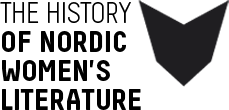If nineteenth-century women could not become pastors and if they could not without conflict devote themselves to intellectual work, the closest they could come to the pulpit was by way of writing hymns. Lina Sandell called herself “a good scribe’s pen”, an expression that combines lack of pretence with high self-esteem. The hymn-books of the free-church communities came to be, and still are, totally dominated by Lina Sandell, beginning with the first edition of Pilgrimsharpan (1861; The Pilgrim’s Harp).In order to create a female tradition, the female Christian writers were looking for models among the figures of the Bible. Together with Charlotte af Tibell, Lina Sandell wrote the book Bibelns qvinnor (The Women of the Bible), and Betty Ehrenborg-Posse chose the Bible’s Deborah, Miriam, and the four daughters of Philip the Evangelist as her models. These learned and poetical women, she thought, had been authorised by God to write spiritual songs, even though some might consider this task to pertain exclusively to the clergy. But the position she obtained offered more room for her preaching than she would ever have had as a pastor.
Tag: Novels
Swedish Sophie Sager’s production is small. She became known for her statements in a case of assault and battery, in which she was the victim. These statements were first published in 1848 as a serial in the newspaper Stockholms Dagblad, and in the same year they appeared with a preface and comments by Sophie Sager under the title Sagerska målet (The Sager Case). Her statements are marked by her strong ambition and desire to receive satisfaction for the offence she had suffered. The offence primarily concerns her right as a woman to reject sexual invitations.It is the way in which she differs from the passive, nice femininity of the time and causes offence through her activities that makes her interesting to us today. Through the story of her life and through her texts we are able to study the development of a female consciousness – how she is initially driven to fight for her own cause, and how at a later point she is roused to extend the fight to the women’s cause in general.
The writing career of Sara Elisabeth Wacklin is a good example of how difficult it was for one of the narrative talents of the semi-public salons to become an author. Just before her death, the three volumes of her lifework, Hundrade minnen från Österbotten (A Hundred Memories from Ostrobothnia), were published. Since it contains examples of all the period’s prose styles, the work forms an interesting link in the history of both the Finnish and the Swedish novel.Even if the book may be regarded as belonging to the contemporary literary tradition of native realists, it can also be interpreted in terms of a searching and experimental effort. This plurality may be a result of Wacklin’s attempt to also offer an unaffected depiction of the Ostrobothnian woman and her conditions of life. The publication of Hundrade minnen från Österbotten became a lengthy affair. The Finnish publisher insisted on a subscription list to guarantee the sales. This never proved necessary, for the work became a considerable success.
Wendela Hebbe, who was active in the 1840s at Aftonbladet, the biggest and most scandalous newspaper in Sweden, has gone down in history as the country’s first permanently employed female journalist. But she was much more than that: she was Sweden’s first female publicist. Her small salon in her office in the Gamla Stan quarter of Stockholm soon became a meeting-place for the men of the new spirit. A circle of free publicists involved a politicised literary culture.In Wendela Hebbe’s journalism, the social tendency of the period is noticeable, but it can be more difficult to discover in her fiction, which employs an unusually high number of voices and experiments with various genres, from Romantic texts and everyday prose to depictions of the lives of common people. In the period from 1846 through 1850, Wendela Hebbe published a number of articles that aimed at publicly exposing the extreme poverty that women in particular could be living in. At the same time, Wendela Hebbe’s literary production is an interesting example of how difficult it was for the female life experience to find its literary form. She did not have an adequate genre for this.
Whereas Mary Wollstonecraft was a radical Romanticist in her writing as well as in her life, the Nordic female authors found it more difficult to rise above the prejudices of what was suitable for women. In Sweden at least, a patriarchal religiosity sanctioned a widespread oppression of women at all levels. To this must be added the male-chauvinist profile of the Romantic writers.The passive female ideal, propagated by Rousseau and dominant on the continent, was what the female English, French, and German authors tried to escape from by going into exile, both metaphorically and literally. In Scandinavia this way out was seldom used. The great Swedish exception is Fredrika Bremer.

